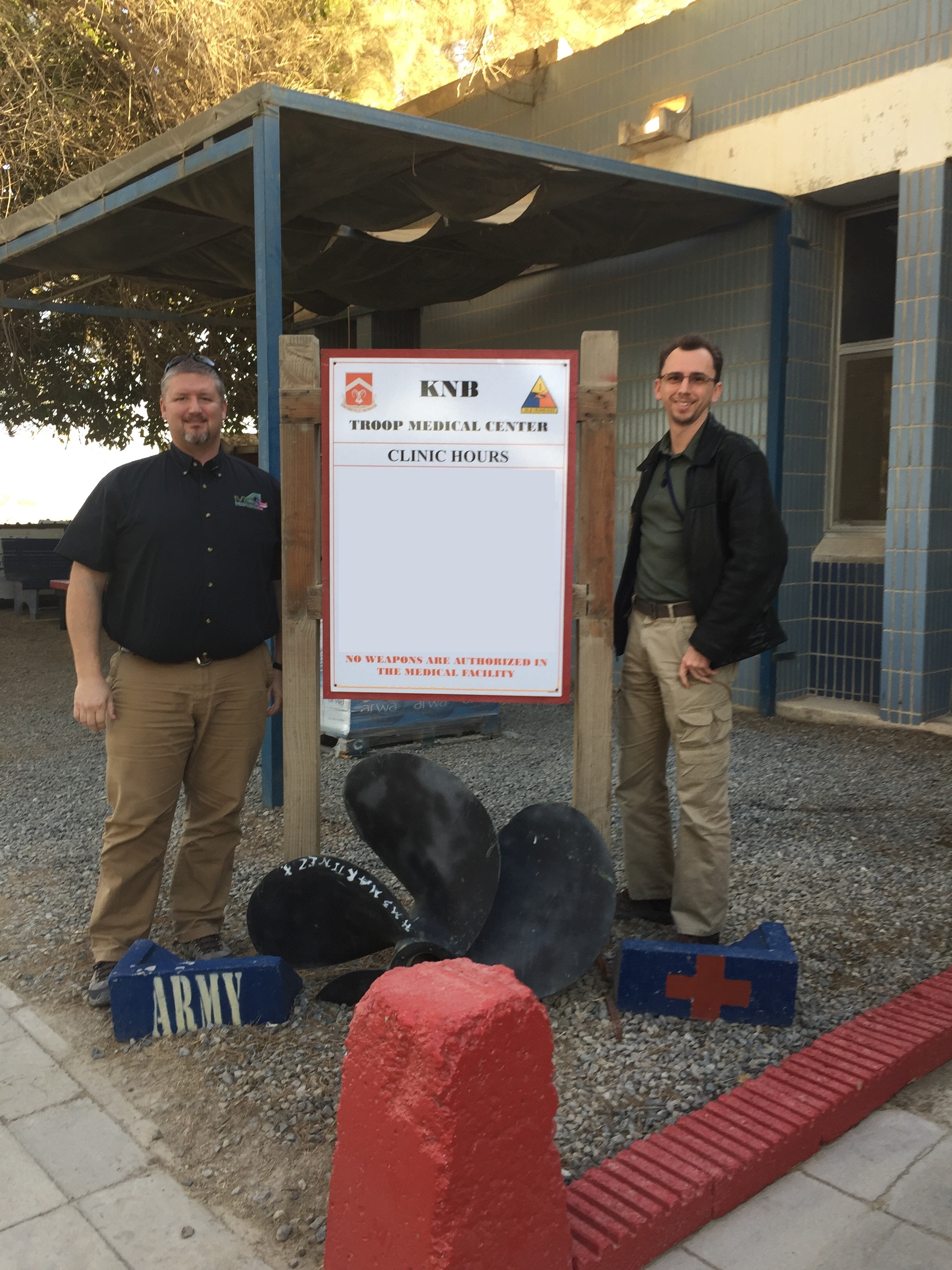
COMMAND/ORGANIZATION: Medical Communications for Combat Casualty Care Product Management Office, Program Executive Office for Enterprise Information Systems
POSITION AND OFFICIAL TITLE: Assistant product manager
YEARS OF SERVICE IN WORKFORCE: 12.5
DAWIA CERTIFICATIONS: Level III in program management and in engineering; Level I in test and evaluation
EDUCATION: MBA with specialties in finance, public management and human resources management, Hood College; Graduate Certificate of Science in marine biology, James Cook University; B.S. in computer engineering, Georgia Institute of Technology; Project Management Professional certification
AWARDS: Commander’s Award for Civilian Service (3); Achievement Medal for Civilian Service (3); Army Medicine Wolf Pack Award
by Ms. Susan l. Follett
Cat herder, line dancer, program manager. Rarely are those six words in one phrase of any kind, but for Scott Brady, they form the core of his approach to supporting the Theater Medical Information Program – Joint (TMIP-J) for the Program Executive Office for Enterprise Information Systems (PEO EIS).
As assistant program manager for TMIP-J, which is part of the Medical Communications for Combat Casualty Care Product Management Office, he’s helping to oversee the materiel release and fielding of the last planned version of the legacy electronic health record for operational medicine. In addition, he manages integrated product teams (IPTs) from a variety of specialties, organizations and locations, provides overall program direction and briefs the milestone decision authority on progress.
“As an IPT lead, I herd cats,” he said. “Cats are patient and smart. But they are easily distracted and do not automatically coordinate efforts effectively. They’re also the scientists of the animal kingdom, periodically pushing items off the counter for no other reason than to verify that gravity is still a thing.”
Brady’s role is to provide direction and focus. “When a cat gets distracted, I attempt to determine if the string that one cat is focused on is a string that we all should be pulling, or if their efforts should be redirected. As an IPT lead, I’m also looking externally to determine if the environment has changed enough that it makes sense that we should do another gravity check, or if that test is simply a waste of resources.”
Brady got his start in acquisition nearly 13 years ago, when he was hired as a logistics engineer for the U.S. Army Medical Materiel Agency (USAMMA). “The more I know about the government’s hiring process, the less I understand how I landed my first job,” he said. After running out of funding while pursuing a master’s degree in marine biology in Australia, Brady decided to pursue a career that would leverage his undergraduate engineering degree. An online search led him to USAMMA. The work—organizing environmental tests for medical equipment and ensuring that the correct items were included in the startup kits for major medical end items so deployed units could use the devices immediately on the battlefield—was not what he expected. “I had an engineering degree and wanted to work more on engineering than in logistics, but I decided to give it a year before looking to leave,” he said.

Brady, right, and Skip Boston, chief systems engineer for the Medical Communications for Combat Casualty Care (MC4) Product Management Office, at the U.S. Army clinic on the Kuwait Naval Base in January, during the initial fielding of TMIP-J 2.3.1.3. (Clinic information was removed from the board for security reasons.) TMIP-J manages the electronic health records used by military medical personnel in operational environments. (Photo by Michael McAllister, MC4 Product Management Office)
During that year, the biomedical engineer on the team left and Brady unofficially took over those duties, working with companies on modifying commercial off-the-shelf items for a deployed environment. “It still wasn’t what I would consider true engineering work, but I enjoyed it,” he said. Not long after, USAMMA became a life cycle manager for medical devices after a reorganization of the U.S. Army Medical Research and Materiel Command. Brady officially transitioned to a biomedical engineer position and began managing acquisition programs through milestones B and C, full-rate production, deployment and sustainment. “I found that work challenging and rewarding,” he said.
When he’s not at work, Brady is involved in a variety of activities, including line dancing, strategy board games and scuba diving. It’s an eclectic mix, and there’s considerable crossover to his work for PEO EIS. “Having varied interests and being able to rapidly switch between them helps with managing an IPT, because there are so many moving pieces and you can’t just focus on one aspect and expect to be successful,” he explained.
Take line dancing, for example. “With line dancing, there are specific choreographed steps for each dance. Like DOD Instruction 5000.02, those steps provide the framework for accomplishing the task and also allow for some variation,” he said. “Maybe a dance calls for a grapevine to the left, but a turning grapevine might also work. But there may be someone to my left who’s not quite keeping up. Should I continue the grapevine to the left and run into the other person, or should I just walk in place so as to not cause a collision?”
And those board games? “Both acquisition and strategy games have many moving pieces, and the better you can keep track of all of the different aspects of what’s going on and change your strategy to adapt to changing conditions, the better your likelihood of being successful,” Brady said.
Earlier this year, Brady completed the Competitive Development Group (CDG), a three-year developmental program that provides members of the Army Acquisition Workforce with expanded training through educational, leader development and broadening assignments. Through the program, he’s seen a broad swath of acquisition, transitioning from managing the acquisition of medical devices to managing the development of chemical defense pharmaceuticals to treat nerve agent poisoning, then serving as a DA system coordinator for the Integrated Air and Missile Defense Battle Command System before taking on his current role at PEO EIS.
“The CDG program reinforced—for me and others I worked with—that acquisition is acquisition, and the same skill set is required whether you’re managing a missile system, an information technology system or the development of a new medical device,” Brady said. For him, acquisition boils down to three things: Know your people, know your product, and know DOD 5000.02.
“Whether it’s a successful milestone review, getting buy-in from the Food and Drug Administration or securing POM [program objective memorandum] funding for a program that was below the cut line, getting a team to succeed in its mission is extremely satisfying,” he said. “Celebrating small successes along the way to providing a capability to the warfighter makes being an Army acquisition professional meaningful.”
“Faces of the Force” is an online series highlighting members of the Army Acquisition Workforce through the power of individual stories. Profiles are produced by the U.S. Army Acquisition Support Center Communication and Support Branch, working closely with public affairs officers to feature Soldiers and civilians serving in various AL&T disciplines. For more information, or to nominate someone, please contact 703-664-5635.
Subscribe to Army AL&T News, the premier online news source for the Acquisition, Logistics, and Technology (AL&T) Workforce.







